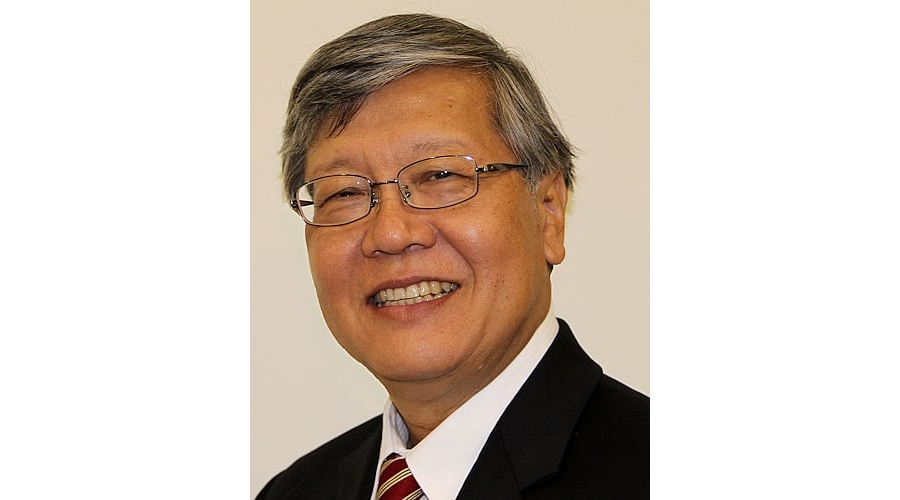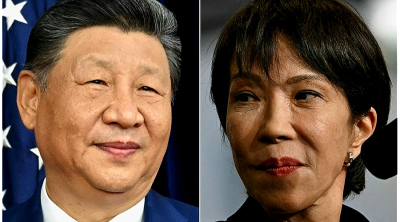
President Xi Jinping’s speech at the Fourth Plenum in Beijing last month outlined the guidelines for the upcoming 15th Five-Year Plan (2026-2030).
There was clear determination to focus on technological self-reliance, building a “high quality productive forces” economic model based on innovation and strong industrial base that would be resilient against external threats and headwinds.
At the Beijing Finance Street Forum at the end of October, Vice Premier He Lifeng stressed the need for China’s financial system to advance risk prevention, strengthen regulation, promote high-quality development and push for high-standard opening-up.
Since the 15th Five-Year Plan period (2026-2030) will be a key period for basically achieving socialist modernization by 2035, a high-quality productive real economy model will require high-quality financial development, demanding an equally strong financial sector.
Foreign visitors to the Forum welcomed the announcement that China would continue to open up her financial sector to foreign participation.
During the Forum, all the top financial leaders, including People’s Bank Governor Pan Gongsheng, National Financial Regulatory Administration Minister Li Yunze and China Securities Regulatory Commission Chairman Wu Qing, outlined measures to improve macro-prudential regulation, make the financial system more inclusive and supportive of high-quality growth, whilst emphasizing appropriate risk management and financial stability.
The Plenum Communique set the guiding principles for the 15th Five-Year Plan very clearly.
The Party is firmly in charge of leading and implementation; putting the people first; pursuing high-quality development; comprehensively deepening reform; promoting interplay between an efficient market and a well-functioning government; and ensuring both development and security.
That would require the Plan to deliver significant achievements in “high-quality development; substantial improvements in scientific and technological self-reliance and strength; fresh breakthroughs in further deepening reform comprehensively; notable cultural and ethical progress across society; further improvements in quality of life; major new strides in advancing the Beautiful China Initiative; and further advances in strengthening the national security shield.”
To achieve all these, the Plan, which will only be fully published next March, had explanatory notes published last week that GDP growth to 2035 would be around 4.17 percent per annum, slower than the 5.2 to 5.4 percent growth rate achieved during the 14th Plan Period (2021-2025).
If this target is achieved, per capita GDP by 2030 would be around $20,000, roughly the mid-level of what the World Bank considers to be advanced countries’ performance.
Assuming that the population of China by 2030 would be 1.386 billion, the GDP by then would be $27.7 trillion. The IMF’s estimate on China’s GDP by 2030 are $25.8 trillion, with Purchasing Power Parity (PPP) GDP at $47.38 trillion.
By comparison, the IMF estimate for the United States (PPP) GDP by 2030 would be $33.96 trillion, with no estimate for nominal GDP. If US nominal GDP is close to PPP levels, China by 2030 would be roughly between 76 percent to 82 percent of US nominal GDP, but larger than the US in PPP terms by 39.5 percent.
In short, by 2030, China would be an economic powerhouse, requiring a substantially deeper and more resilient financial sector to support continued stable growth.
Finance supporting innovative technology is exactly the area where the United States is still leading.
The United States took 75 years to overtake the United Kingdom in displacing pound sterling in 1945, as by 1870, the United States was on par with the British Empire in terms of nominal GDP.
During this time, the United States built up Wall Street, created the Federal Reserve, nation-wide banking, strong commodity and stock markets. She also built very strong insurance, pension and financial derivative markets.
For China to support high quality growth, including taking high risks in new technological revolution and industrial transformation, would require China to deepen her long-term pension, insurance and private equity funds that can produce patient capital to absorb high risk innovation projects and infrastructure investments.
Foundationally, a strong financial system is built on strong, stable money.
The United States Dollar has an entrenched dominant position because it is the leading fiat money reserve currency, accounting for 74 percent of international trade payments in Asia, 58 percent of central bank reserves, and 90 percent of global foreign exchange transactions.
When a large part of the foreign exchange reserves backing a country’s own money is in US dollars, what happens when the US decides to impose sanctions and freeze such USD assets, as had happened to Russia after 2022?
Holding foreign fiat currency as majority backing for domestic fiat currency has a sanction risk that is today not zero.
The weaponization of the US dollar, as lamented by former IMF Chief Economist Ken Rogoff (Our Dollar, Your Problem) and former US Treasury Undersecretary Lael Brainard (Exorbitant Pillage), is causing foreign holders of dollars, friends and foes alike, to re-think the use of the dollar as the anchor of monetary stability.
The dollar will remain as the dominant fiat currency in usage, but people are now thinking of how to avoid the weaponization risk.
This is most evident in the rising price of gold, as central banks have been adding 1,000 tons of gold to their reserves every year for the last three years.
China is today the largest producer of gold in the world, and the Shanghai Gold Exchange has the largest turnover in gold transactions.
China has today roughly 7 percent of gold in her foreign exchange reserves, roughly the same as Japan, with the global average at 20 percent.
The advanced economies of Europe and the US have about 70-80 percent of their foreign exchange reserves in gold, mainly because their currencies are reserve currencies for the rest of the world.
A return to the gold standard is not eminent, but a hybrid system is now on many drawing boards.
Finance is meant to serve the real, people-based economy, not to exploit it. Thus, the path towards deeper, inclusive and green finance that is risk-resilient and supportive of innovation and technology, must be the foundation of the new Chinese development model.
That is a work in progress at a scale in population and quality never before tried in history.
That is the underlying message behind building a socialist economy with Chinese characteristics.
References:
- Ministry of Foreign Affairs People’s Republic of China: Communique of the Fourth Plenary Session of the 20th Central Committee of the Communist Party of China
- South China Morning Post: Chinese vice-premier vows further opening up of financial sector
- CGTN: Navigating change: Insights from day 1 of 2025 Financial Street Forum
- South China Morning Post: China names GDP benchmark for headline target: 4.17% annual growth through 2035
- Google Search: IMF forecast of China GDP by 2030
- Insider Monkey: IMF’s GDP forecast of 2030 GDP by country: Top 10
- Amazon: Our Dollar, Your Problem: An Insider’s View of Seven Turbulent Decades of Global Finance, and the Road Ahead
- Foreign Affairs: Can the U.S. Dollar survive the U.S. government?
(Andrew Sheng is Distinguished Fellow of Asia Global Institute, University of Hong Kong, and Chairman of the George Town Institute of Open and Advanced Studies, Wawasan Open University, Penang.)
ADVERTISEMENT
ADVERTISEMENT








































